04.05.2023
_Draiflessen%20Collection_%20Mettingen%20.jpg?locale=en)
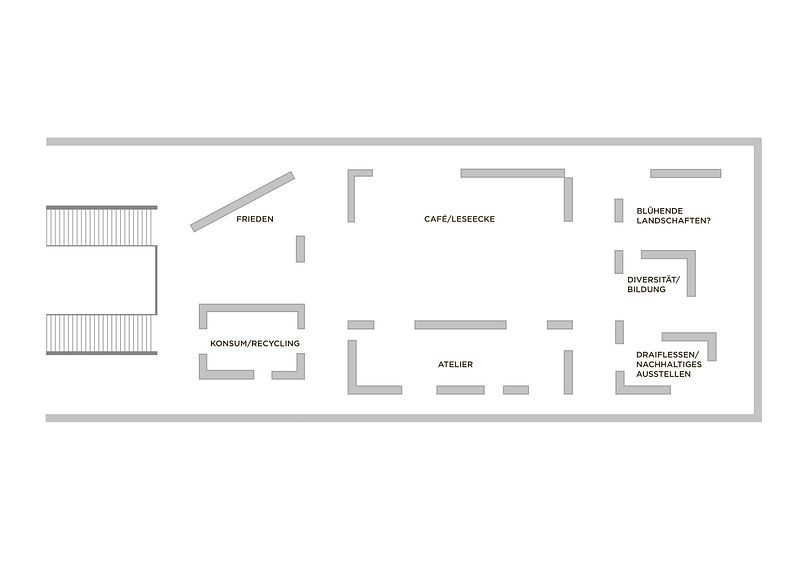
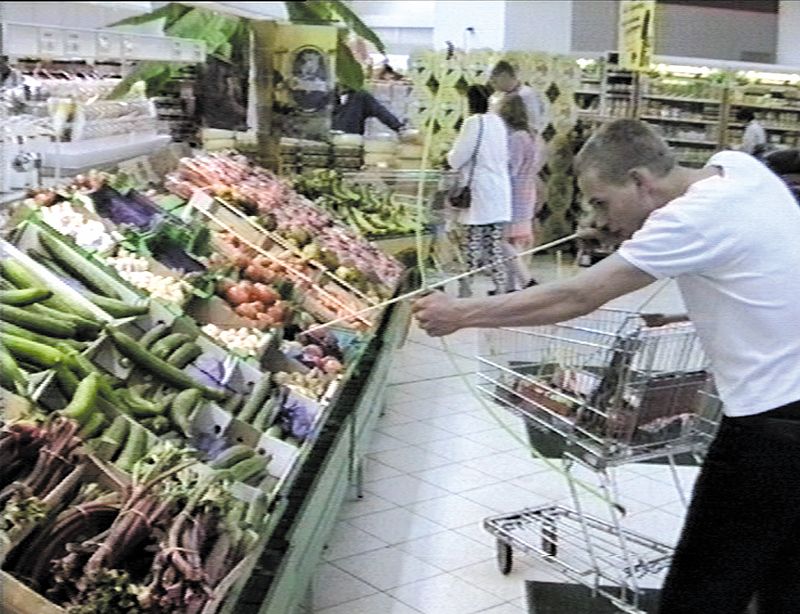
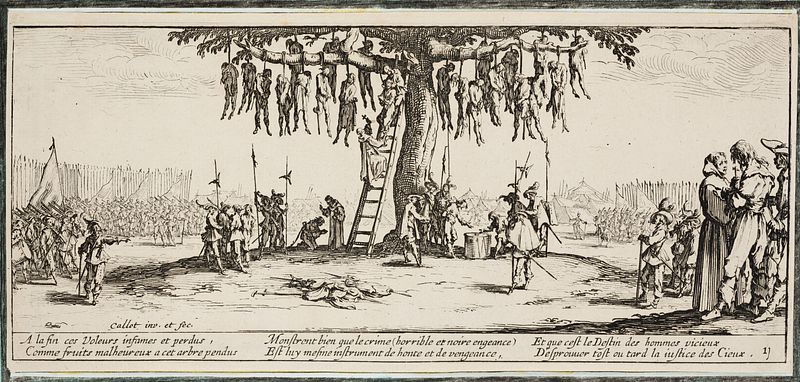
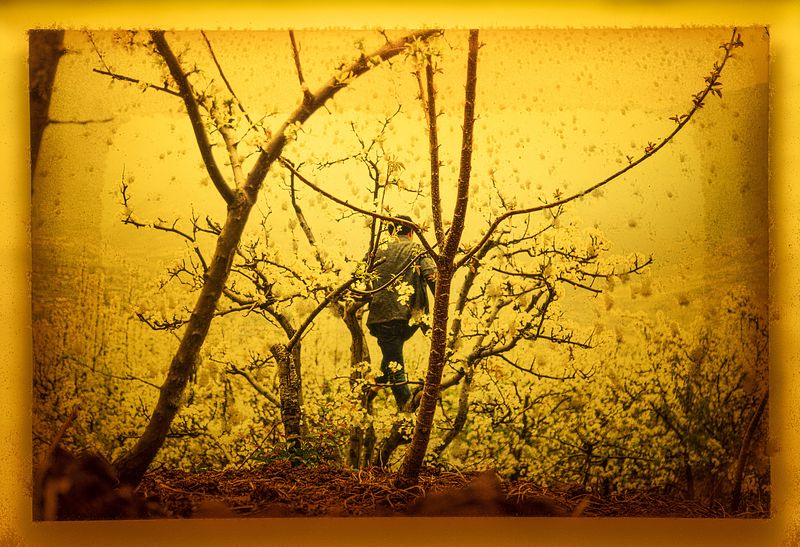
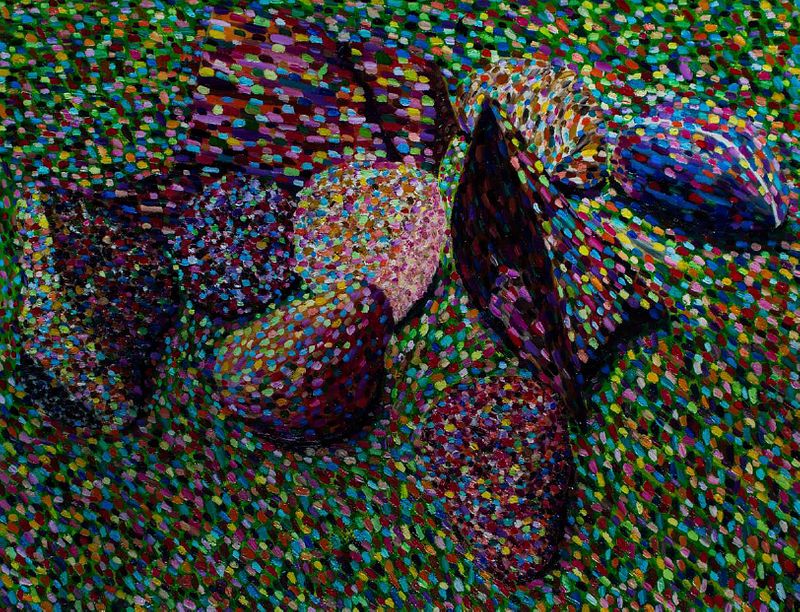
_Draiflessen%20Collection_%20Mettingen%20.jpg?locale=en)
THE STATE OF THINGS? The thematic islands
In recent years, hardly any other concept has experienced such a dazzling rise in prominence as sustainability. Appearing daily in the media, this buzzword encapsulates myriad controversial issues and pressing questions related to our current (crisis) situation.
What is global resource justice? To what extent do our individual behaviors relate to what is happening at the regional and global level? What role does our consumer behavior play in this context? How free and equal is access to education? How smart is our technology and how liveable are our cities? What can we actively change?—To discuss these and other both highly current and inescapable questions surrounding sustainable thinking and action, the Draiflessen Collection invites you to a series of lectures, workshops, guided tours, and conversations under the title THE STATE OF AFFAIRS?
What is global resource justice? To what extent do our individual behaviors relate to what is happening at the regional and global level? What role does our consumer behavior play in this context? How free and equal is access to education? How smart is our technology and how liveable are our cities? What can we actively change?—To discuss these and other both highly current and inescapable questions surrounding sustainable thinking and action, the Draiflessen Collection invites you to a series of lectures, workshops, guided tours, and conversations under the title THE STATE OF AFFAIRS?
_Draiflessen%20Collection_%20Mettingen%20.jpg?locale=en)
Luftbild der C&A-Eigenfabrikation „Herfa“ in Mettingen, Overgünne, nach 1954
| © Draiflessen Collection
Atelier
A studio and an event area with a café and reading corner form the heart of the tour. As a workshop of ideas, the studio becomes a place of encounter, creativity, and emotion. The focus here is not only on thinking, but above all on doing, which is crucial for new experiences and thus the generation of knowledge. Thematic islands surround this central hub, addressing the topics of Consumerism / Recycling, Peace, Blooming Landscapes?, Diversity / Education, and Draiflessen / Sustainable Exhibition Practices. Here we present a deliberate selection of artistic perspectives and objects that are created in the context of specific events and demonstrate the complexity of the respective themes. We have chosen these points of focus based on the Draiflessen site and the United Nations’ “17 Sustainable Development Goals (SDGs).”
With this project, the Draiflessen Collection as a museum seeks to set an example and to simultaneously take action. The concept of the tour builds on the idea that our understanding of sustainability must include not only the ecological, social, and economic aspects of the concept, but also cultural sustainability. We strive to be a place of responsible action—and we invite you to take part!
With this project, the Draiflessen Collection as a museum seeks to set an example and to simultaneously take action. The concept of the tour builds on the idea that our understanding of sustainability must include not only the ecological, social, and economic aspects of the concept, but also cultural sustainability. We strive to be a place of responsible action—and we invite you to take part!

Grundriss des Projekts Der Stand der Dinge? Entwurf Astrid Michaelis, Michaelis Szenografie 2023
| © Michaelis Szenografie, Münster
Consumerism/Recycling
Individual consumption of commodities produces the largest share of average greenhouse gas emissions in Germany.
The video Die Jagd / The Hunt shows the artist Christian Jankowski (b. 1968) shooting his groceries with a bow and arrow in the supermarket instead of shopping normally—thus confronting the viewer with a thoroughly mundane practice, reflected in a highly unusual, even comical way. We are all, of course, familiar with the act of searching for, tracking, and hunting down our food. Jankowski transforms this rather unspectacular act of providing for our basic needs. He creates an unconventional, absurd situation and, in a way that is simultaneously distanced and laconic, as well as playfully mischievous, invites us to reflect on our everyday consumption, on production and distribution.
Invisible Repairs or Visible Mending & Patching?
In both the past and the present, repairing and altering clothing has served to prolong the use or reuse of worn garments. We undertake such alterations for various reasons, ranging from a need to replace worn-out sections of fabric, to a desire to modify the pattern or adapt to changes in fashion.
Elaborate samplers exhibiting a variety of embroidery, darning, sewing, and mending techniques, often created in needlework classes from the nineteenth-century onward, bear witness to a high level of expertise and a delicate aesthetic sensibility. In those days, care and mindful use also increased the life span of clothing: people had simple clothes for everyday wear and better garments for Sundays; they also, for example, wore easily washable aprons or protective oversleeves. Today, altered and repaired garments take on a modern and at the same time highly personal character. Sewing boxes, which provide storage for everything needed to create clothes, can also exhibit a high degree of individuality.
The video Die Jagd / The Hunt shows the artist Christian Jankowski (b. 1968) shooting his groceries with a bow and arrow in the supermarket instead of shopping normally—thus confronting the viewer with a thoroughly mundane practice, reflected in a highly unusual, even comical way. We are all, of course, familiar with the act of searching for, tracking, and hunting down our food. Jankowski transforms this rather unspectacular act of providing for our basic needs. He creates an unconventional, absurd situation and, in a way that is simultaneously distanced and laconic, as well as playfully mischievous, invites us to reflect on our everyday consumption, on production and distribution.
Invisible Repairs or Visible Mending & Patching?
In both the past and the present, repairing and altering clothing has served to prolong the use or reuse of worn garments. We undertake such alterations for various reasons, ranging from a need to replace worn-out sections of fabric, to a desire to modify the pattern or adapt to changes in fashion.
Elaborate samplers exhibiting a variety of embroidery, darning, sewing, and mending techniques, often created in needlework classes from the nineteenth-century onward, bear witness to a high level of expertise and a delicate aesthetic sensibility. In those days, care and mindful use also increased the life span of clothing: people had simple clothes for everyday wear and better garments for Sundays; they also, for example, wore easily washable aprons or protective oversleeves. Today, altered and repaired garments take on a modern and at the same time highly personal character. Sewing boxes, which provide storage for everything needed to create clothes, can also exhibit a high degree of individuality.

Christian Jankowski, Die Jagd, 1992/1997, Video, 1′11″, Farbe, Ton
| © Courtesy of the artist and Klosterfelde Edition, Berlin. Leihgabe der Julia Stoschek Foundation Berlin/Düsseldorf
Peace
Signed years 375 ago, the treaties now known as the Peace of Westphalia put an end to the Thirty Years’ War (1618–48). A great many accounts of the time vividly document this enormous European catastrophe of the seventeenth century, which cost millions of lives and depopulated entire regions. The prints created during this period in particular present a powerful picture of the horrors of that war. In 1633, in reaction to the siege and conquest of his homeland Lorraine, the artist Jacques Callot (1592–1635), born in Nancy, published his most famous work, an eighteen-part series of etchings entitled Les Grandes misères de la guerre.
Each of the small prints gives a detailed and, above all, unsparing account of the everyday atrocities of the Thirty Years’ War. Explanatory captions by Abbot Michel de Marolles (1600–1681) accompany these scenes. The exhibition presents reproductions of this series, and the Liberna Collection includes an album containing the original etchings. On weekends and during guided tours, interested visitors can view the album itself.
As a parallel exhibit, beginning in mid-May visitors will find the installation THE MIRROR OF PEACE by the Dutch artist Renee van Bavel (b. 1981) in the Draiflessen garden. This work confronts the viewer with the insight that a life of peace cannot be taken for granted, and that each of us must take conscious action in order to maintain peace.
Each of the small prints gives a detailed and, above all, unsparing account of the everyday atrocities of the Thirty Years’ War. Explanatory captions by Abbot Michel de Marolles (1600–1681) accompany these scenes. The exhibition presents reproductions of this series, and the Liberna Collection includes an album containing the original etchings. On weekends and during guided tours, interested visitors can view the album itself.
As a parallel exhibit, beginning in mid-May visitors will find the installation THE MIRROR OF PEACE by the Dutch artist Renee van Bavel (b. 1981) in the Draiflessen garden. This work confronts the viewer with the insight that a life of peace cannot be taken for granted, and that each of us must take conscious action in order to maintain peace.

Jacques Callot, Les Grandes misères de la guerre, La pendaison, 1633
| © Draiflessen Collection, Foto/photo: Stephan Kube
Blooming Landscapes?
Life on Earth cannot survive without plants. They produce the oxygen necessary for life, provide food and raw materials, and are used in medicines. They are indispensable for spaces of rest and recreation, and can even convey a sense of home. For a long time, people took this natural treasure for granted and considered it limitless. Too often, however, it has been ruthlessly exploited and manipulated, both by industry and by individuals. Eager to act sustainably, today people seek a more conscious approach to the greenery in and around their living spaces: cultivating flowers without pesticides, rediscovering forgotten wild herbs, or redesigning their own balconies or gardens. At the same time, we continue to interfere with nature’s processes and thus fuel climate change. The consequences are usually catastrophic and often remain irreparable even years later.
In his artwork, Maximilian Prüfer (b. 1986) addresses the destruction of the environment through human activity. In the course of Mao Zedong’s propagandized ecological campaigns, sparrows, seen as grain pests, were completely exterminated in some regions of the Chinese province of Sichuan. Among other consequences, this led to insect infestations that caused crop failures and famine. Subsequent massive pesticide campaigns eliminated the insects so successfully that, since the 1980s, people have had to laboriously pollinate fruit trees in these areas by hand, as bees no longer survive. Prüfer captures this process from pollination to harvesting and selling fruit at the market in his hauntingly, soberly narrated video A Gift From Him, and in accompanying photographs soaked in honey.
In his artwork, Maximilian Prüfer (b. 1986) addresses the destruction of the environment through human activity. In the course of Mao Zedong’s propagandized ecological campaigns, sparrows, seen as grain pests, were completely exterminated in some regions of the Chinese province of Sichuan. Among other consequences, this led to insect infestations that caused crop failures and famine. Subsequent massive pesticide campaigns eliminated the insects so successfully that, since the 1980s, people have had to laboriously pollinate fruit trees in these areas by hand, as bees no longer survive. Prüfer captures this process from pollination to harvesting and selling fruit at the market in his hauntingly, soberly narrated video A Gift From Him, and in accompanying photographs soaked in honey.

Maximilian Prüfer, Honey pictures 4, 2018
| © Maximilian Prüfer
Diversity/Education
Since 2006 the Heilpädagogische Hilfe Osnabrück (Osnabrück Therapeutic Pedagogy Centre, HHO) has run the KunstContainer (ArtContainer) as an open service. This art project offers people with special needs a space where they can freely discover and develop their individual artistic potential. The artist Christoph Seidel (b. 1964) oversees the KunstContainer.
Initially funded by donations and with only limited open hours and personnel, the project has developed over the years into an integral part of the HHO, used by around sixty employees and participants weekly. Individual artists have already had the opportunity to present their works in national and international exhibitions. As demonstrated by numerous collaborations with various institutions, such as the Kunsthistorisches Institut (Institute of Art History) at the University of Osnabrück or the Draiflessen Collection in Mettingen, the KunstContainer has proven to be an extremely successful instrument of cultural education, and not only for people with disabilities.
Here we present works by various artists, including reproductions, originals, and short video sequences, which provide an impression of the work of the KunstContainer.
Initially funded by donations and with only limited open hours and personnel, the project has developed over the years into an integral part of the HHO, used by around sixty employees and participants weekly. Individual artists have already had the opportunity to present their works in national and international exhibitions. As demonstrated by numerous collaborations with various institutions, such as the Kunsthistorisches Institut (Institute of Art History) at the University of Osnabrück or the Draiflessen Collection in Mettingen, the KunstContainer has proven to be an extremely successful instrument of cultural education, and not only for people with disabilities.
Here we present works by various artists, including reproductions, originals, and short video sequences, which provide an impression of the work of the KunstContainer.

KunstContainer Osnabrück, Dieter Töpfer, ohne Titel, 2008
| © Dieter Töpfer
Draiflessen/Sustainable Exhibition Practices
Where the large exhibition space of the Draiflessen Collection in Mettingen now stands, clothing was once produced for C&A. With its characteristic shed roofs, the architecture deliberately reflects the site’s industrial heritage. The dimensions and ceiling design of today’s special exhibition space correspond to those of the former sewing shop.
From the 1950s on, men’s sports’ jackets and suits were produced here, using what at the time was innovative and state-of-the-art manufacturing equipment. With the decline of the European clothing industry, the C&A factory in Mettingen also closed its doors.
In its place, the Brenninkmeijer family erected a modern museum and event building, starting in 2007. Even then, aspects of sustainability already played a decisive role in the planning process. For example, the heating, ventilation, and air conditioning system uses geothermal energy and photovoltaic power to ensure an environmentally friendly and efficient energy supply.
But there is still room for improvement! For example, sustainability criteria will be given even greater consideration in the conception of future exhibitions at the Draiflessen Collection. What does it mean to plan and implement an exhibition in a sustainable way? What can sustainable exhibiting look like? We, the exhibition organizers, wish to explore these questions and invite you, the visitors, to discuss them with us and to contribute your ideas.
From the 1950s on, men’s sports’ jackets and suits were produced here, using what at the time was innovative and state-of-the-art manufacturing equipment. With the decline of the European clothing industry, the C&A factory in Mettingen also closed its doors.
In its place, the Brenninkmeijer family erected a modern museum and event building, starting in 2007. Even then, aspects of sustainability already played a decisive role in the planning process. For example, the heating, ventilation, and air conditioning system uses geothermal energy and photovoltaic power to ensure an environmentally friendly and efficient energy supply.
But there is still room for improvement! For example, sustainability criteria will be given even greater consideration in the conception of future exhibitions at the Draiflessen Collection. What does it mean to plan and implement an exhibition in a sustainable way? What can sustainable exhibiting look like? We, the exhibition organizers, wish to explore these questions and invite you, the visitors, to discuss them with us and to contribute your ideas.
_Draiflessen%20Collection_%20Mettingen%20.jpg?locale=en)
Luftbild der C&A-Eigenfabrikation „Herfa“ in Mettingen, Overgünne, nach 1954
| © Draiflessen Collection
Das vollständige Veranstaltungsprogramm zu DER STAND DER DINGE? finden Sie hier zum Download: